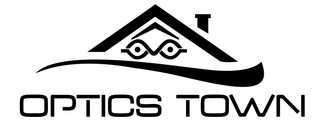What Does SPH Mean for Glasses? A Complete Guide to Understanding Spherical Power
Understanding your glasses prescription can sometimes feel like decoding a secret language. But knowing what each part means helps you get the right lenses for your eyes. One key term often seen on prescriptions is "SPH," short for spherical power. Getting a clear grasp of SPH can make a big difference in choosing the best glasses or contacts for your vision needs.
In this guide, you'll learn what SPH actually means, how it affects your glasses, and why it matters. Whether you're picking out new frames or just curious about your eyes, this article helps you understand the role of spherical power in vision correction.

What Is SPH in Eyeglass Prescriptions?
Definition of SPH
SPH, or spherical power, measures how much correction your eyes need for clear vision. It’s listed in units called diopters (D), which tell how strong the lenses should be to fix your sight problems. Think of SPH as the number that says "this is how much correction your eyes need."
The Role of SPH in Correcting Vision
If you have nearsightedness (myopia), your SPH will be a negative number. This means your eyes focus light in front of your retina, causing blurry distance vision. For farsightedness (hyperopia), your SPH will be a positive number, indicating the eye's need for help focusing far away. The spherical power aligns with how well you see at different distances, giving you sharper, clearer vision.
How SPH Values Are Determined
The Eye Exam Process
During an eye exam, a professional measures your SPH using devices like the phoropter and retinoscopy. You look through different lens options, and the eye doctor asks which makes your vision clearer. This process is quick but vital to find the right correction.
Interpreting SPH Numbers
· Positive (+) numbers mean you are farsighted.
· Negative (–) numbers mean you are nearsighted.
· Typical SPH readings can range from +4.00 for mild hyperopia to –8.00 for high myopia.
For example, if your prescription says +2.50 SPH, you're farsighted enough that you need lenses to help you see clearly at distance. Conversely, a reading of –3.75 indicates moderate nearsightedness.
The Impact of SPH on Glasses and Contact Lenses
Choosing the Right Lens Prescription
SPH influences the type of lenses you’ll wear. Higher SPH numbers tend to make lenses thicker and heavier, especially in glasses. Contact lenses, however, conform to your eye shape, so the impact of spherical power on weight isn't as noticeable.
When selecting your glasses, the spherical power determines lens height, thickness, and even frame style options. Lower SPH values often mean thinner, lighter lenses, while higher values might need special design features to keep your glasses comfortable.
Customizing Visual Solutions
People with high SPH values may need lenses with specific coatings or materials to reduce weight and glare. For low or moderate SPH, standard lenses usually suffice. Personalized options improve comfort and clarity, especially when correction needs are more significant.
Special Cases and Considerations
Multi-Focal and Progressive Lenses
SPH doesn’t work alone. It's essential along with other terms like cylinder (CYL) and add in multifocal lenses. These help correct astigmatism and focus issues. For those with complex prescriptions, understanding how SPH combines with these terms can improve your choice of lenses and better support your vision.
Variations in SPH and Their Effects
High myopia (large negative SPH) can increase risks like retinal detachment. Conversely, high hyperopia (large positive SPH) might cause eye strain. Sometimes, children with significant SPH adjustments might need special attention for developmental reasons. Always discuss these factors with your eye care specialist.
Expert Insights and Practical Tips
Recommendations from Ophthalmologists
Eye doctors advise matching your lenses with your specific SPH. A proper prescription ensures sharper vision and reduces eye strain. If your SPH is high, consider lightweight, high-index lenses for comfort. For lower SPH, standard lenses typically work well and are easier on your budget.
Actionable Tips for Patients
· Always get regular eye exams to update your SPH and other prescription parts.
· Talk openly with your optometrist about your daily needs.
· Keep your glasses clean and handle them carefully, especially if they have high-SPH lenses that are more fragile.
· Consider lens coatings like anti-glare or scratch-resistant options based on your SPH and lifestyle.
Conclusion
Understanding what SPH means on your glasses prescription helps you make smarter choices. It plays a fundamental role in how well your lenses correct your sight and how comfortable they feel. Regular eye exams ensure your SPH is accurate, so your glasses work their best. If you want the clearest vision possible, always consult with your eye care professional about what your specific prescription requires. Your eyes deserve the right correction—making informed decisions starts with understanding SPH. Check more eyelgasses knowledge at Optics Town, a company focus on eye health, we sell high quality glasses frames wholesale around the world.

